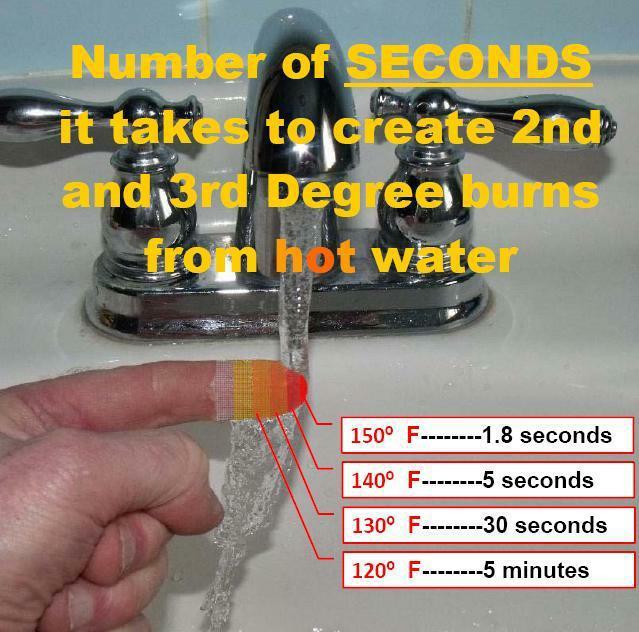Nothing spoils a relaxing shower like a sudden spike or plummet of water temperature. Someone in your house flushes a toilet, turns on the dishwasher, runs a load of wash—and surprise!—your moment of Zen turns into a moment of seeing red. And “seeing red” can be taken quite literally here: Scald burns from hot water can happen faster than your spouse will yell “don’t flush!” particularly if you have your thermostat set too high in the first place.
These days, you’d be hard-pressed to find new construction bathrooms that don’t include anti-scald valves in the tub/shower. It’s pretty standard for plumbing codes to require them. But if you have an older home, you might still be on flush-defense when you shower. Why not change that? Anti-scald valves are relatively inexpensive—starting around $150—and are especially important for safety if you have young kids or elderly/disabled individuals in your home. (Both have slower reaction times and more sensitive skin.)
Research published by the National Association of Certified Home Inspectors shows that:
- Water that is 160º F can cause scalding in less than a second.
- More than 2,000 American children are scalded each year, mostly in the bathroom and kitchen.
- Startling scalds may lead to additional injuries, such as falls and heart attacks.
You’ll often read that there are two types of anti-scald valves: those that respond to pressure shifts (these are least expensive) and those that respond to temperature shifts. But there’s actually a third kind, which responds to both. This one is the safest of all.
Until you get your valves switched out—and we hope you will—one of the simplest safety measures you can take in the bathroom is to lower your water heater thermostat to 120 degrees. Though water at this temperature will cause pain to your average person, it will at least allow time to get out of Dodge before you literally start seeing red.






